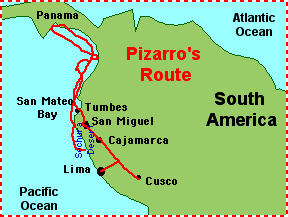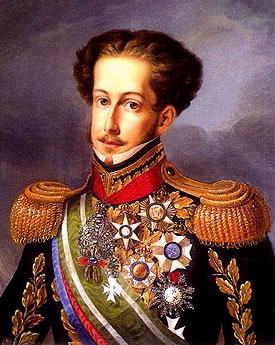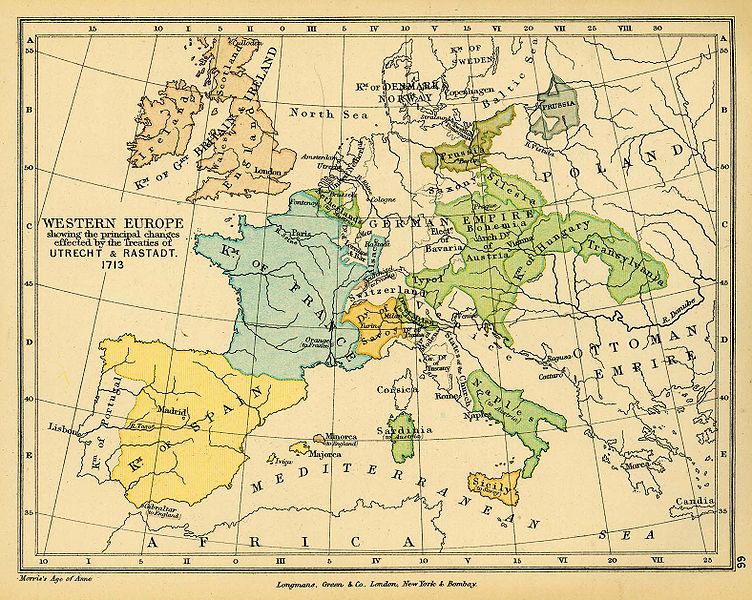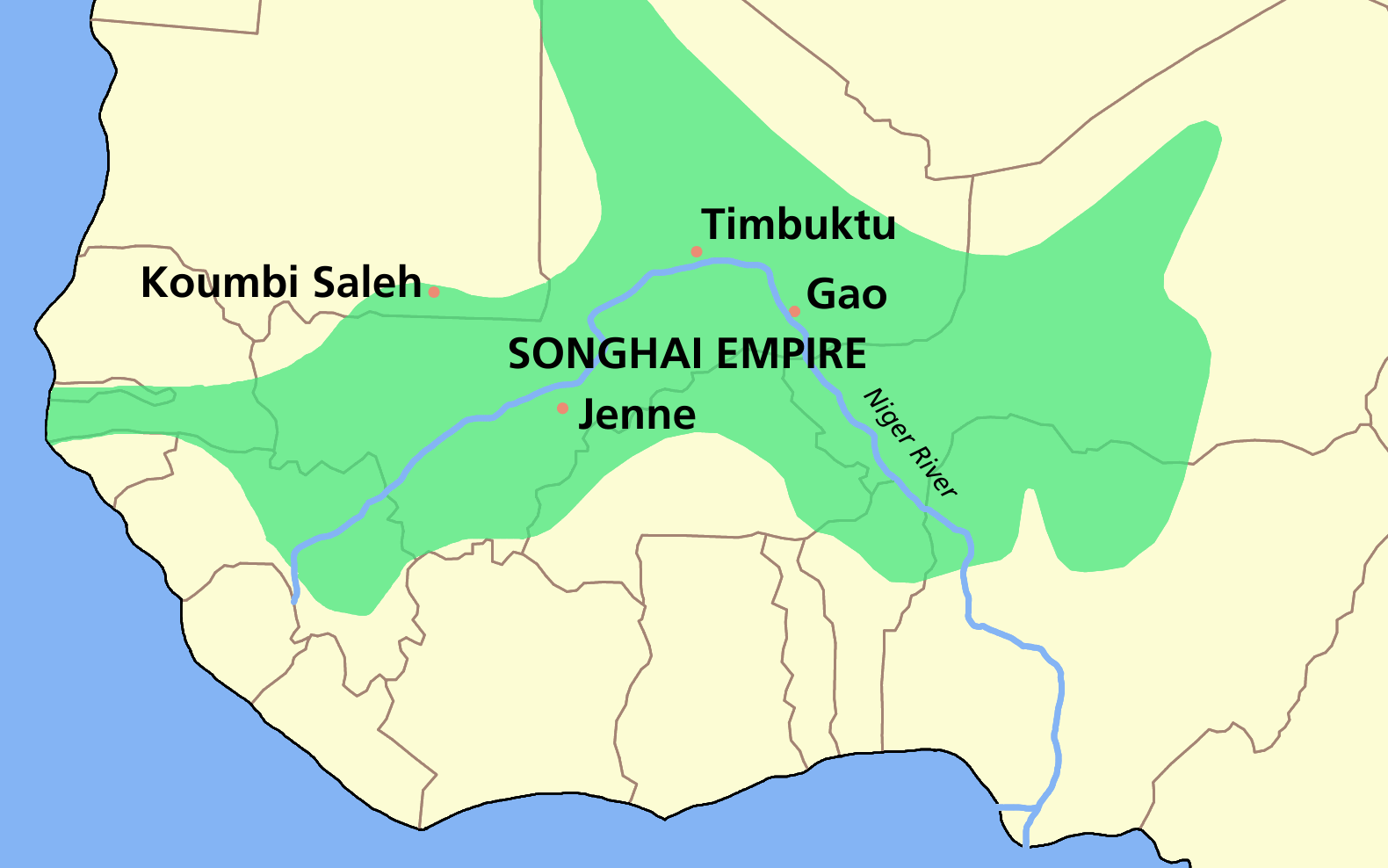This
Section 1
Working together using this wiki
Think of this wiki as a shared online whiteboard. The entire class can share information using this wiki, making your research accessible to everyone. You will not have to complete the IDs all by yourself! Play around with this wiki: Notice how you can add comments to a page, see what people have changed, and edit all the text.
How to add your information to this wiki...
- Click on the Edit tab at the top.
- Scroll down to your term and copy and paste your information. (Be sure to add your name after the term)
- Use the right toolbar to insert images and files (be sure to keep your images small - we are all sharing this page)
Use this checklist to check your work: (I use this list to grade your wiki)
- Add your name next to the term/concept you are responsible for (5 pts)
- Underline the term/concept - make it bold or heading 2 size (5 pts)
- Brief summary of term/concept - use bullets or highlight key points (55 pts)
- Picture/map - must include caption (keep image small in size) (image = 15 pts; caption =10 pts)
- Please provide a FULL citation for the source(s) used - www.citationmachine.net can help. (5 pts)
- Post your info in the right location - instead insert your image with caption right under your content. (5 pts)
You are responsible for ONE term this week.
- When you are done, hit Save at the bottom and view your work (make changes (Edit) as necessary).
- TIP: only one person can edit this wiki at a time, so I suggest you create your entry in a word program first. Then you can simply copy and paste it right in when the wiki is available for edit.
Identifications - Atlantic Slave Trade
Columbian Exchange - Evan Hoke
- A result of the Age of Exploration and the First Global Age.
- Food, livestock, and diseases were three main elements of the Columbian Exchange.
- As Columbus “discovered America,” Western Europe saw the many economic opportunities available in the New World.
- The trans-Atlantic slave trade began, and many Native Americans died of European and African diseases.
- Spanish conquistadors brought gunpowder and the horse to America, in addition to the Catholic Christian Church.
- The Americas provided new foods like corn, potatoes, tomatoes, peppers, pumpkins, squash, pineapples, cacao beans, and sweet potatoes.
- Turkeys and other animals provided a new source of food for Europeans.
- Tobacco was also carried to Europe.
- The Americas got livestock from Europe such as cattle, pig, and sheep as well as grains like wheat.
- From Africa came the onion, citrus fruits, bananas, coffee beans, olives, grapes, rice, and sugar cane.
- Smallpox, influenza, malaria, measles, typhus, and syphilis were brought to the Americas.

This shows what elements were traded in the Columbian Exchange.
Content: Harrison, Susan. "The Columbian Exchange." 08 May 2006 8 Jan 2009 <http://weuropeanhistory.suite101.com/article.cfm/columbianexchange>.
Image: Thompson, "The Impact of Colonization." 8 Jan 2009 <http://mrthompson.org/text/2-3%20The%20Impact%20of%20Colonization.htm>.
Sugar production and the slave trade
-D. Holter

- Sugar was the most important crop in the Caribbean and most of the New World.
- The importance of sugar led to a great demand for manual labor.
- Soon after the establishment of plantations, the native American population began to dwindle
- Replacement manual labor came straight from the shores of Africa.
- Various imperial trading companies were formed to retrieve slaves from the West and East African coasts.
- The local African government was fragmented into many different warring tribes, thus providing easy motivation for local kings to capture slaves to sell.
- The trade routes used for transporting slaves formed a triangle from Europe to Africa to the Americas.
Middle Passage
Triangle Trade Routes- Jordan Hubbard
The Triangle trade route consisted of three journeys. The outward passage was from Europe to Africa. European traders would bring copper, cloth, beads, guns, ammunition, and other manufactured goods to trade for slaves. The second journey was from Africa to the Americas or the Caribbean carrying manufactured goods along with African captives to sell and make a profit from. The last journey was the homeward passage carrying raw materials like sugar, tobacco, rum, molasses, hemp, rice, cotton, and other goods back to Europe.
"About The Slave Trade." Triangular Trade. National Maritime Museum . 7 Jan 2009 <http://www.nmm.ac.uk/freedom/viewTheme.cfm/theme/triangular>.

The Triangle trade routes connected Europe, Africa, the Americas, and the Caribbean together.
Hernan Cortes- Kimberly Martinez
-
Hernán Cortés de Monroy y Pizarro, 1st Marqués del Valle de Oaxaca was born in 1485 and passed away on December 2nd, 1547.
-
Under King Castile, Cortes expanded the conquered land for Spain in Mexico. As well as he was a Spanish Conquistador.
-
Cortes was one of the few during the 16th century that was part of the Spanish colonization of Americas.
-
He traveled first to Hispaniola and later Cuba where he received an encomienda as well as became, for only a short amount of time, the magistrate of the second Spanish town on the island.
-
He was thought to be a God by the Aztecs when he first arrived for his light skin as well that he came in ridding on a horse. The God that the Aztec’s believed he was was Quetzalcoatlin the foretold God that would return.
-
Cortes used this to his advantage and took the gold and minerals from the Aztecs that made Spain quite profitable.
-
Cortes though is mainly known for destroying the empire of the Aztecs with the help of neighboring tribes who were jealous and hated the Aztecs.

"Hernan Cortes." Wikipedia. Wikipedia. 8 Jan 2009 <http://en.wikipedia.org/wiki/Hernan_Cortes>.
Franciso Pizzaros - Incas- Taylor McAlister
- conquistador that invaded the Pacific coast of South America
- "discovered" the Incan empire and brutally reduced it to nothing
- landed at San Mateo Bay at 1532
- went through snow capped mountains to reach Cajamarca in 1533
- From there, he assassinated the last emperor of the Incans, Atahuallpa
- after he had destroyed the Incan emipre and its capital, Cusco, he founded the city Lima which means "City of the Kings"
- Pizarro was killed in 1541 by Cortez's henchman, who wanted to claim Lima for themselves

This was the route Francisco Pizarro used to conquer the Pacific Coast. It starts at San Mateo bay and ends at Lima and Cusco.
"Francisco Pizarro." Enchanted Learning. 8 Jan 2009 <http://www.enchantedlearning.com/explorers/page/p/pizarro.shtml>.
Francisco Vazquez de Coronado- Elayne Monjar
- Was a Spanish conquistador
- Coronado from 1540-1542 searched for mythical cities of gold, in what is now the southwestern United States of America
- Hoped to find the Seven Cities of Gold aka the cities of Cíbola and Quivira
- Was unsuccesful and the Seven Cities of Gold are still Spanish myth

This is Francisco Vazquez de Coronado
Adas, Michael, Stuart B. Schwartz, and Marc J. Gilbert Peter N. Stearns. World Civilizations: The Global Experience 4th edition. Boston: Pearson /Longman, 2004.
“Francisco Vazquez de Coronado” 22 May 2009. wpbs.org/.../people/images/coronado1.jpg
New Spain and Mexico City -Rebecca Overcash
New Spain
- First European nation to colonize America.
- Cortés invaded Mexico and defeated the Aztec Empire between 1519 and 1521.
- By 1533 Pizarro had conquered the Incas of Peru.
- Both of the civilizations possessed artifacts made of precious metals.
- The Spanish searched for piles of gold and silver.
- In 1545 they discovered silver at Potosí, in present day Bolivia, and in Mexico around the same time, but didn’t discover gold.
- Silver mines and New World gold was the base of Spanish wealth and power for the next hundred years.
- Spanish conquerors established a system of forced labor called encomienda.
- Religious officials and Spanish government didn’t like this, disliked this system, so it didn’t last long.
Mexico City
- Built on the ruins of Tenochtitlán (capital of Aztec empire).
- Aztecs developed advance civilization and dominated most of Mexico during the 15th and 16th centuries.
- Spanish explorers landed in Mexico in the 16th century and defeated the Aztecs.
- They Spaniards then founded Mexico City and became the leading urban center in Spain’s American colonies.
- Mexico became independent in the 1820s and Mexico City became the capital.

Map of the Vice Royality of New Spain with boundaries.
"The Vice Royalty of New Spain." WebZip. 8 Jan 2009
http://faculty.smu.edu/bakewell/BAKEWELL/images/viceroyalty-ns.jpg.
"Mexico City." MSN Encarta. 8 Jan 2009
<http://encarta.msn.com/encyclopedia_761569238/Mexico_City.html>.
"United States History." MSN Encarta. 8 Jan 2009
<http://encarta.msn.com/encyclopedia_1741500823_2/United_States_History.html>.
Encomienda System- Abby Pardue
The Encomienda is a feudal system that was modeled and based from the Spanish feudal system in Europe. The system was put in place in the New World in areas such as South and Central America as well as the Caribbean. In this system, the native Indians would be taught about the Spanish culture and would learn about the Catholic faith in return for protection and labor. This system did not begin based on the intention to treat the natives poorly but the system soon developed into an unjust one that mirrored slavery.

This is painting of a Spanish colonist displaying evident brutality upon a native
Scott, Meredith. "The Encomienda." Millersville. 8 Jan 2009 http://www.millersville.edu/~columbus/papers/scott-m.html.
Bartolme de Las Casas - Lise Ross

The Father of anti-imperialism and anti-racism
-born in Seville in 1474
-emigrated to the Caribbean island of Hispaniola in 1502
-became a priest in 1510
-adamant opponent of Spanish colonialism
-one of the few openly opposed to the treatment of the Native Americans by the Spanish colonist
-could not get his point across because the pope did condoned the actions of the colonists
- joined the Dominican Order in 1522
-died in Madrid in 1566
"BARTOLOME DE LAS CASAS (1484-1566)." Oregon State. 8 Jan 2009 <http://oregonstate.edu/instruct/phl302/philosophers/las_casas.html>.
Silver mining in the Americas - Andrew Steiner
- The major silver discoveries in the Americas were made in Mexico and Peru between 1545 and 1565
- Potosi (located in Peru or modern-day Bolivia) was the largest mine and supported 160,000 people directly in the early 17th century
- A system of labor drafts (the mita) replaced encomienda workers and American Indian slaves as the chief source of mining labor during the 16th century
- The 17th century saw many wage workers willing to work in the mines
- The Spanish discovery of mercury, which is used to extract silver ore, greatly aided American silver production
- Mining stimulated the colonial economy, but led to long-term trading deficits for the colonizing European nations

Spain employed the use of galleons, or large, heavily-armed ships, to transport silver mined in the Americas back to Spain.
Stearns, Adas, Schwartz, Gilbert. World Civilizations: The Global Experience. 4th. Pearson Education, Inc. 2005.
Portugal in Brazil – Russell Stewart
- Pedro Cabral began the colonization of Brazil in 1500
- At the time of Portuguese colonization, Native Americans numbered around seven million in the region
- Early Portuguese exploration covered only the coastal regions
- Brazil’s climate proved ideal for the farming of sugar cane
- Large labor forces were needed to farm sugar cane resulting in the importation of huge numbers of African slaves
- As gold and silver were discovered inland, colonization extended beyond the coastal regions
- In 1807, the Prince Dom Joao of Portugal retreated to Brazil to escape Napoleon Bonaparte and established Brazil as the capital of the Portuguese Empire
- Dom Joao returned to Portugal in 1821
- The following year Brazil claimed its independence from Portugal
 Dom Pedro, son of Dom Joao, led Brazil to its independence from Portugal in 1822
Dom Pedro, son of Dom Joao, led Brazil to its independence from Portugal in 1822
"History." Brazil. 2006. interKnowledge Corp.. 7 Jan 2009 http://www.geographia.com/brazil/brazihistory.htm.
The Dutch West India Company-- Sara Toomey
- founded in 1621 by the Estates-General of the Netherlands
- it was intended for use to compete with Spain for control of resources
- it also aided development of Manhattan and Albany as well as New Jersey
- had complete judiciary and administrative control over their territory
- conquered by the English in 1664
Karnoutsos, Carmela. "Dutch West India Company, 1621-1664." Jersey City: Past and Present. 8 Jan 2009
<http://www.njcu.edu/Programs/jchistory/Pages/D_Pages/Dutch_West_India_Company.htm>.
"Dutch West India Company." The Columbia Electronic Encyclopedia. 2007. Columbia University
Press. 8
Jan 2009 http://www.infoplease.com/ce6/history/A0816459.html.
Ships like these were used by the Dutch West India Company
Treaty of Tordesillas – Cameron Tripp
· Made between Portugal and Spain
· Was designed to clear up confusion over newly claimed lands in the New World
· Declared by Pope Alexander VI who established an imaginary line north to south through the Atlantic, 100 leagues from the Cape Verde islands
· Spain got all unclaimed territories to the west of the line
· Portugal got all unclaimed territories east of the line
· The Portuguese, upon further exploration realized that they had gotten “the short end of the stick” and the line moved to 370 leagues from the Cape Verde Islands. This meeting took place in the town of Tordesillas
· Over time the Portugese slowly pushed the line westward, and because the line was not very well define they Spanish did not put up any opposition.
Koeller, David. "The Treaty of Tordesillas." WorldChron. 1998. 8 Jan 2009 <http://www.thenagain.info/WebChron/Americas/Tordesillas.html>.

A map made recently after the treaty was made. The line goes down through South America
Sociedad de Castas
Effects of disease in the Americas- Adam Barr
- The population of the Americas before 1492 is thought to have been about 50 million individuals; as many as 80% of these died from European diseases by the seventeenth century.
Some of the diseases affecting the Native Americans were:
- Syphilis
- Smallpox
- Measles
- Mumps
- Bubonic Plague
- Scarlet Fever
 An example of a rash caused by smallpox, the biggest killer in the endemics that occured in the colonial period.
An example of a rash caused by smallpox, the biggest killer in the endemics that occured in the colonial period.
Halverson, Melissa. 2009. 7 Jan 2009 http://www.earlyamerica.com/review/2007_summer_fall/native-americans-smallpox.html.
HACIENDAS VS PLANTATIONS -Dalyn Bellingham
HACIENDA
-
AGRICULTURAL INSTITUTION
-
SPANISH INSTITUTION
-
NOT EFFICIENT BUT SOCIAL PRESTIGE
-
WORKERS LIVED ON THE LAND
-
PRODUCED CROPS FOR SELF-SUFFICIENCY
-
ASSOCIATED WITH SERFDOM
PLANTATION
-
NORTHERN EUROPEAN ORIGINS
Brazil's Age of Gold- Will Boggs
- Ouro Preto was the center of Brazil's gold rush starting in the 18th century
- During Brazil's gold rush the country became very popular and a source of a lot of gold increasing many aspects of the country most notably the economic aspect
- However in the 19th century the mines went dry in Brazil and with this the country became much less influential and therefore many aspects of the country declined
- Even though the gold rush did not last a long time it left a lasting impact. The gold rush left many churches, bridges, and fountains as a testimony to the past importance of Brazil
- During the gold rush Brazil's art also greatly increased mainly due to the sculptor Aleijandro. This sculptor revolutionized art from this country and during this time Brazil also produced many other notable artists

This is a Brazilian city, Ouro Preto, that was founded as a mining town during the 18th century. It became an important cultural legacy durig Brazil's age of gold.
<http://www.opcotours.com/packages/ouropreto/ouropreto1.jpg>.
"Historic Town of Ouro, Preto, Brazil." 1999. Heindorffhus. 8 Jan 2009 <http://worldheritage.heindorffhus.dk/frame-BrazilOuroPreto.htm>.
Bourbon Reforms: Josh Broach

(Result of the war of Spanish Succession that ended with a seperation of Spain and France and a removal of Spanish possessions in Europe.) This is what the Bourbons were given to work with following the war.
Background: The Hapsburgs are about to fall out of power in Europe and France is prepared to place a French relative of Charles II on the throne. The ensuing result was the War of Spanish Succession where Great Britain and others refused to allow a unification of Spain and France under Bourbon control. Charles V of Spain (The Bourbon relative placed on the throne and Grandson of Louis XIV) was allowed control of Spain but had to give up its imperial possessions in Europe and was not allowed to unify with France.
Reforms: Mainly directed in stimulating a dead economy, reviving a bankrupt treasury, and restoring society and the infrastructure as a whole. French influence overwhelmed the brand new Spain.
Attempted to regionalize economic progression and jumpstart economic integration.
Wanted to modernize agriculture.
Wanted to construct better ships.
Intendants were established to aid the king in regional matters and decentralized power.
A new viceroyalty was established in New Granada.
Divided secular and Church roles. (Suppression of the Society of Jesus)
Attempted to organize a militia in the absence of a real army.
Creoles were driven from the position audencia or court judges.
Monopolies in the colonies.
Heavier taxation in the colonies.
Results: As a result of these reforms, Spain fell into an even deeper hole.
No investment capital.
No nationalization of industry.
Racial tensions between creoles and peninsulares.
Revolts by lower social classes.
Fell behind other European powers.
http://en.wikipedia.org/wiki/Bourbon_Reforms
Comunero Revolt- JC Bunch
The Comuneros Revolt was a series of uprising by locals in the area that is currently Colombia, against Spanish authorities the later part of the 19th century. The revolt had many causes but some major causes where economy and government.

This map shows the area where the Comunero Revolt took place
www.britannica.com/EBchecked/topic/130783/Comunero-Rebellion - 45k -
Askia Mohammed - Songhai- Colt Burgin
- Died 1528
- Ruled Songhai- 1493-1528
- Abu Bakr Dao was Sunni Ali's successor to the ruler of the Songhai Empire.
- Ruled for little over a year
- overthrown by Mohammed Ture Ibn Abi Bakr or King Asika Mohammed I.
- Made Songhai largest emprire in Afrian history
- Under his rule, Songhai territory greatly expanded
- Was Muslim
- Tried to incorporate Islam into society through schools, government, etc.
- Increased trade with Europe.
Citation- "Muhammad Askia The Great." accessgambia.com. 7 Jan 2009 <http://www.accessgambia.com/information/songhai-3.html>.

Map of the Songhai Empire. Asika Muhammed ruled over this area and helped expand its territory.
Gold trade - West and Central Africa - John Caudle
- Gold Coast is center of gold trade in West Africa
- Countries such as Britain and France established colonies in Africa for gold trade
- The were taxes and duties put on gold production in some areas
- West African gold trade eventually extended south
- Most areas used slaves to mine gold
- Zimbabwe was mined heavily for gold
- Many areas in Africa based their economies strictly on gold trade with other areas and countries
- Central African gold trade and excavation was started by the Portuguese
- Tradesmen and merchants traded gold
- Robbers and bandits were common among areas of gold trade
 The Yellow and Gold areas show the gold trading centers in West Africa. All are located near the coast showing their involvement with other countries. The Gold Coast is shown in this map.
The Yellow and Gold areas show the gold trading centers in West Africa. All are located near the coast showing their involvement with other countries. The Gold Coast is shown in this map.
Smitha, Frank. "African Empires to CE 1500." Macrohistory and World Report. 2000. Macrohistory . 8 Jan 2009 <http://www.fsmitha.com/h3/h15-af.htm>.
"Central Africa, 1400 - 1600 AD." Heilbrunn Timeline of Art History. 2008. Metropolitan Museum of Art. 8 Jan 2009 <http://www.metmuseum.org/toah/ht/08/sfc/ht08sfc.htm>.
Osei Tutu - Asante
East Africa and the Indian Ocean Trade Network - Lewis Dalrymple
- Although most American slaves came from the coasts of West Africa, there were slaves traded to African islands and the Middle East from East Africa
- Slaves from this region were used by Europeans for their plantation colonies.
- Portugese and Indo-Portugese used slave soldiers to expand their territories.
- Many slaves from this area were transported to other areas along the Indian Ocean, or were transported to other locations via the Indian Ocean
- ie. The Arabian Peninsula and the Middle East via the Red Sea
- Europeans established some plantation-style colonies on islands such as Mauritius in the Indian Ocean, and these depended on the East African slave trade.
- On Zanzibar and other offshore islands, and later on the coast itself, merchants from other nationalities followed the European model and set up clove-producing plantations using African slave laborers.
- Zanzibar eventually had a slave population of about 100,000, with the Sultan himself owning 4,000 slaves.
- A religious upheaval in centralized Eastern Africa led to many captives
- These captives were sold as slaves to the European powers

East African Trade Routes
Boers - Apartheid
Zulu rise to Power
Africans in the Americas - culture-- Meghan Edwards
Music:
*polyrhythmic rooted in Western African ethnic groups
*includes call and response; syncopation; percussion
*hymns (called "spirituals")
Dance:
*"get downs" and "Ringshouts" embrace body language and became a part of everyday African American life
*brought the "Cakewalk" which would later evolve into the "Charleston"
*drew from Caribbean dance forms
Art:
Included (but was not limited to):
*quilts
*small drums
*wrought iron figures and sculptures
*ceramic vessels in the south
*embraced geometric simplicity and incorporated various colors into paintings and quilts and other works of art
Language: Because slaves from various African tribes and culture groups were often mixed together, 'new' languages would evolve after being mixed
Religion: Protestant Christianity and Islam were the two most common transported religions
Names: often drew from languages

^^This image depicts two Americans of African decent dancing the Charleston
http://imagecache2.allposters.com/images/pic/ISI/TW005X~The-Charleston-Posters.jpg
"African American History and Culture." Smithsonian. 2008. 8 Jan 2009 <http://www.si.edu/Encyclopedia_SI/history_and_culture/AfricanAmerican_History.htm>.
"African American Culture." Wikepedia. 2008. Wikepedia. 8 Jan 2009 <http://en.wikipedia.org/wiki/African_American_culture>.
End of slave trade - abolitionism
Comments (0)
You don't have permission to comment on this page.